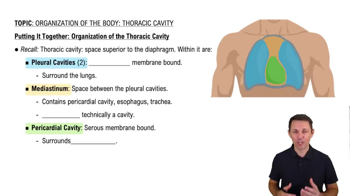Multiple Choice
What structure separates the thoracic cavity from the abdominopelvic cavity?
187
views
 Verified step by step guidance
Verified step by step guidance Verified video answer for a similar problem:
Verified video answer for a similar problem:



 3:2m
3:2mMaster Introduction to Body Cavities with a bite sized video explanation from Bruce Bryan
Start learning